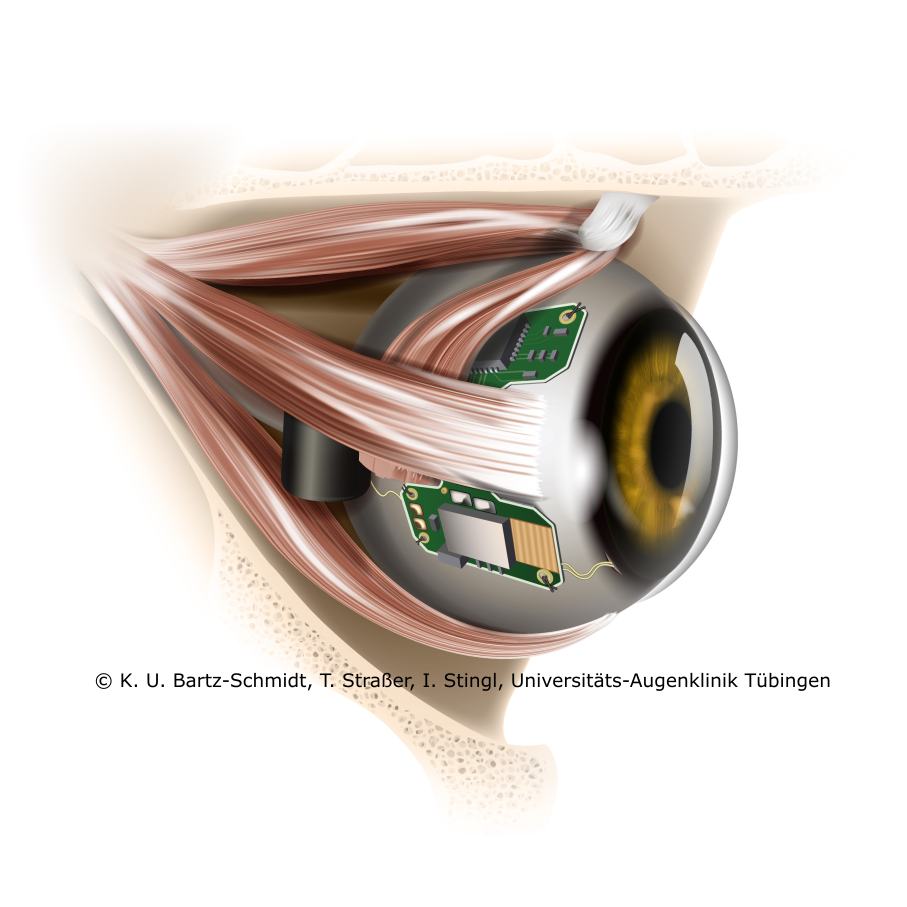Circuit Design for Ciliary Muscle Potential Recorder
The goal of this project is to develop an integrated chip to record, filter and digitize ciliary muscle potentials. The focus is on low-power, low-area designs to enable a potential future use in medical implants.
The ability of the human eye to focus on different distances is called accommodation. The involved mechanical components (among others) are the eye lens and the ciliary muscle. With age, the lens stiffens and the eye progressively loses the ability to focus on close objects. This is called presbyopia and the vast majority of people above 60 years old suffer from this. The ciliary muscle stays almost unaffected by aging processes and can still be used to measure the accommodative demand of the eye. By measuring the muscle potentials this can be used to control an artificial lens and create an intuitive visual aid system which is based on the biological mechanism.
As a first step, to characterize the ciliary muscle potentials, a miniaturized implant was designed. It is composed of commercially available components and does not contain any custom chips. This design digitizes the recorded potentials with a 24 bit resolution at a rate of 250 Hz and transmits the data via Bluetooth Low Energy to an external PC. It is optimized for low power consumption to enable runtime of multiple weeks without the need to replace or recharge the battery.
The next step is to analyze the recorded signals to create a custom analog front end which is tailored to the characteristics of ciliary muscle potentials. To enable a long runtime for potential implants the power consumption should be reduced as far as possible without compromising the measurements. The acquired bio signals are quite slow (from 0.1 to 10 Hz) and low in amplitude (<10mV) which requires high amplification, high resolution and a robust protection against dc offsets and supply noise without attenuating the signal.

